Dubai Airshow: Jetpacks finally set for lift off?
- Published
Will jetpacks ever become a viable means of transport?
Are jetpacks about to move from the realms of fantasy and adventure to serious practical application?
A deal between Dubai's civil defence force and New Zealand-based Martin Aircraft suggests that the technology is about to move mainstream.
For decades, jetpack fans have predicted a future when we would be using personal power-packs - like James Bond in the 1965 film Thunderball.
Now, Dubai has announced an initial order for up to 20 Martin jetpacks, plus simulators and a training package, for delivery next year.
No financial details were disclosed at the Dubai Airshow, other than it is a multi-million-dollar contract. Each jetpack has a catalogue price of $250,000 (£165,000).
But these will not be used as the latest must-have for the wealthy and foolish. Dubai wants them for more serious reasons.
Emergency missions
Lt Col Ali Hassan Almutawa, director of the Dubai Civil Defence Operations Department, said the packs would be used for reconnaissance and rescue.
"We see them performing a first-responder role," he says, adding that the jetpacks would be particularly useful in the fire department during emergencies in Dubai's skyscrapers.
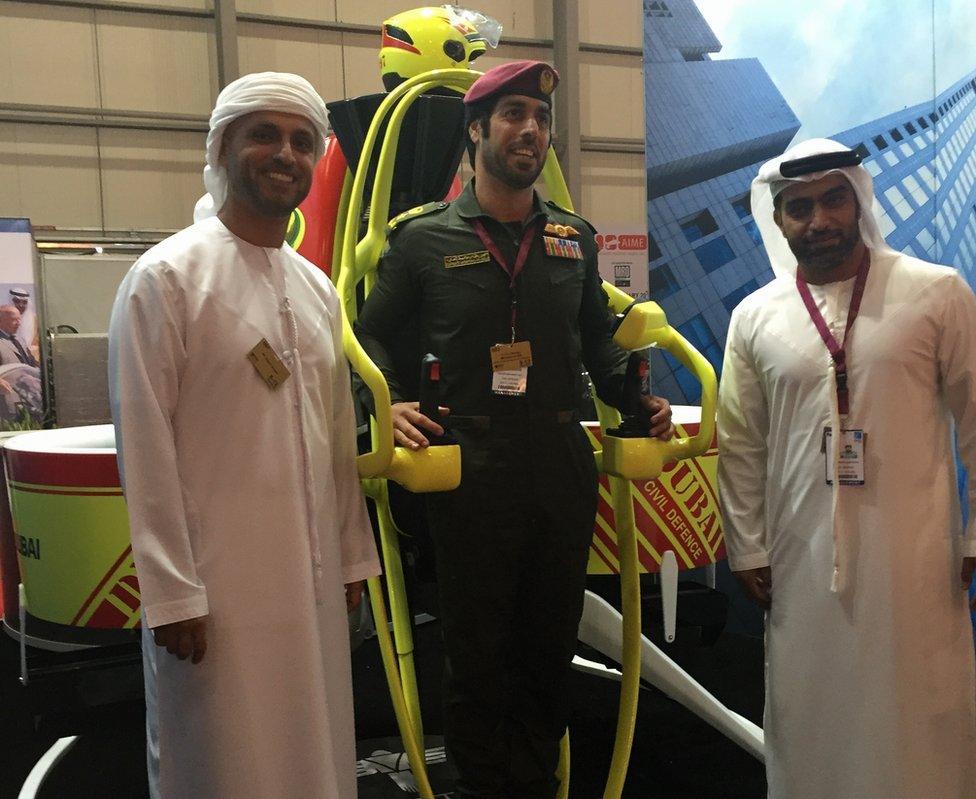
Dubai's jetpacks will be used for reconnaissance and rescue missions, says Lt Col Almutawa
"Sometimes we have challenges or difficulties to reach the top floors of those buildings. The aircraft can go into confined spaces to size-up the situation. We are going to modify them with thermal imaging cameras," he says.
Dubai will also test the feasibility of a pilot flying a "mule train" of unmanned jetpacks behind, like controlling a drone. "That is good for rescues," says Col Almutawa.
"Sometimes, in fires, people go to the top of the building. You cannot always get ladders there, and you cannot always use the elevators.
"Rescue and fire-fighting, we see these as the main role at first. But there could be many other roles."
Personalised helicopter
So, what are the specs of these craft?
It is powered by a two-litre, two-stroke 200hp V4 engine, with a top speed of 74km/h (45mph) up to 1,000m (3,000ft) in altitude, and a maximum flight time of 45 minutes.
The craft, made of carbon fibre and 3D printed parts, is powerful enough to carry up to 120kg (18st 13lb), which is useful for carrying medical equipment. There is also a parachute if needed, for safety.
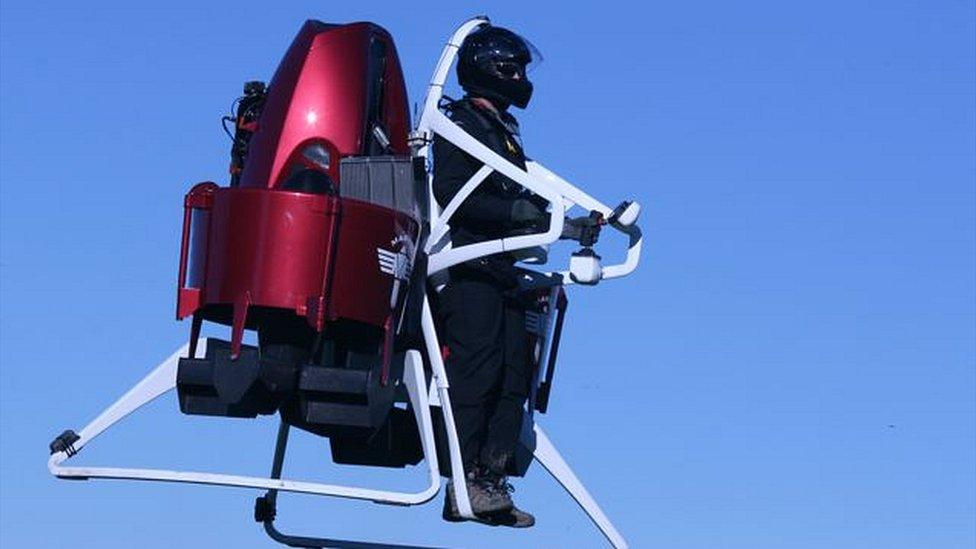
The jetpack is fitted with a parachute system
The on-board computer controls a stability system, so if an operator lets go of the controls the jetpack hovers.
Peter Coker, chief executive of Martin Aircraft, is working with an unnamed engine company to develop something more powerful and capable of flying for longer. "We hope to have something to say on that early next year," he says.
Purists might say the Martin jetpack, with its ducted fans to provide lift-off, is more akin to a personalised helicopter than the rocket-powered craft some other entrepreneurs are developing.
In New Zealand, the Civil Aviation Authority has certificated the jetpack as a microlight, although the company is discussing with the regulator plans to create its own unique classification.
Getting off the ground is as quick as jumping in a car or onto a motorbike, says Mr Coker. Put on the helmet and harness, start the engine - and go. "If you're a first responder situation, you'd be all ready to set off anyway."
Further roles
The Martin jetpack was invented by New Zealander Glenn Martin, who had been working on the technology for 30 years. He brought new investors, and Martin Aircraft listed on the Australian stock market in February.
The company's controlling investor is now Kuang Chi Science, an emerging technology and innovation firm listed in the Hong Kong stock market and run by 32-year-old Dr Liu Ruopeng.

Glenn Martin invented his jetpack after working on it for 30 years
As well as having a market for emergency situations, the Martin Aircraft's backers see the jetpack having roles in the oil and gas industry, and farming and agriculture.
Mr Coker does not rule out sales for personal use, although aviation authorities may have something to say about that.
Nevertheless, he believes that one day there will be jetpack clubs, where users in controlled environments will fly out for pleasure trips.
Not everyone is convinced, however.
Google, a company that likes to keep ahead of the game, looked into developing a general-use jetpack, but dismissed it. "Wouldn't it be great to have a jetpack that isn't also a death trap?" executive Astro Teller said last year.
Critics say it will be a long time before jetpacks are quiet enough, and fuel-efficient enough, to make them practical for general use.
But as inventor Mr Martin once said: "Deliver the dream that people want, not the product that is easiest to build."
Last week Australian jetpack entrepreneur David Mayman used a much smaller, lighter jetpack for a 10-minute flight around New York's Statue of Liberty.
'Bond-like'
"This is a Bond-like product," says Mr Coker. "It's great for what it is, and may be a potential competitor in the future. But it's very much a different product, looking at going in a different direction."
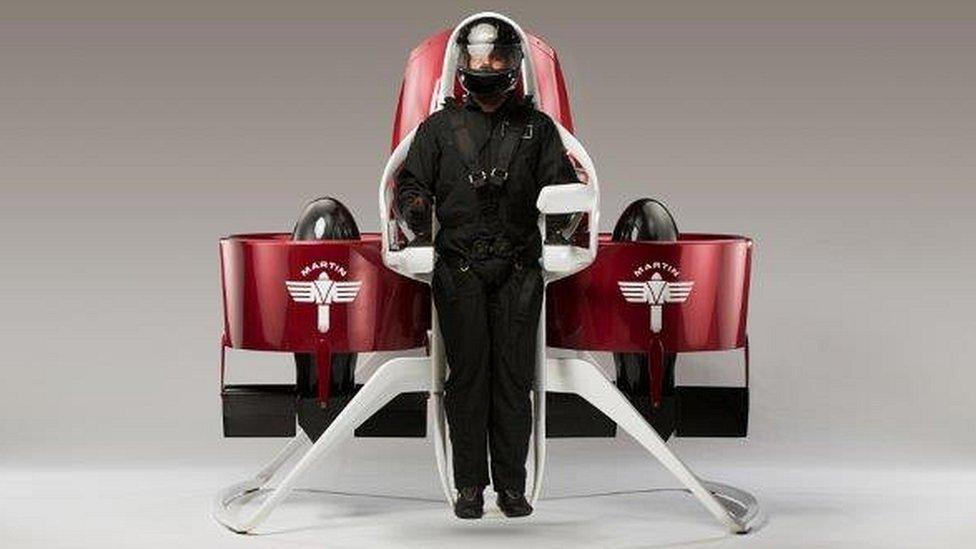
The Dubai deal show the jetpack's technology is "coming of age", says Martin's Peter Coker
His company is also developing an unmanned version, controlled like a drone from afar, that could deliver supplies or act as a rescue vehicle for a stranded person. This product, though, is a longer way off.
"We're constantly looking at ways to develop the product, new applications and new power sources. We think this is a disruptive technology. We're constantly looking at how to take our thinking to a different level."
Mr Coker sees the main competitor coming from helicopters, but says they are not as manoeuvrable and cannot get to, or land on, such confined spaces.
He acknowledges that this is early-stage technology with much development work left to do, but says "I think the Dubai deal shows that the technology is coming of age."
- Published11 November 2015
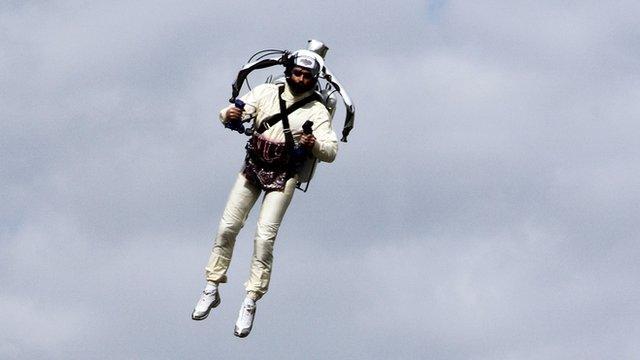
- Published10 November 2015
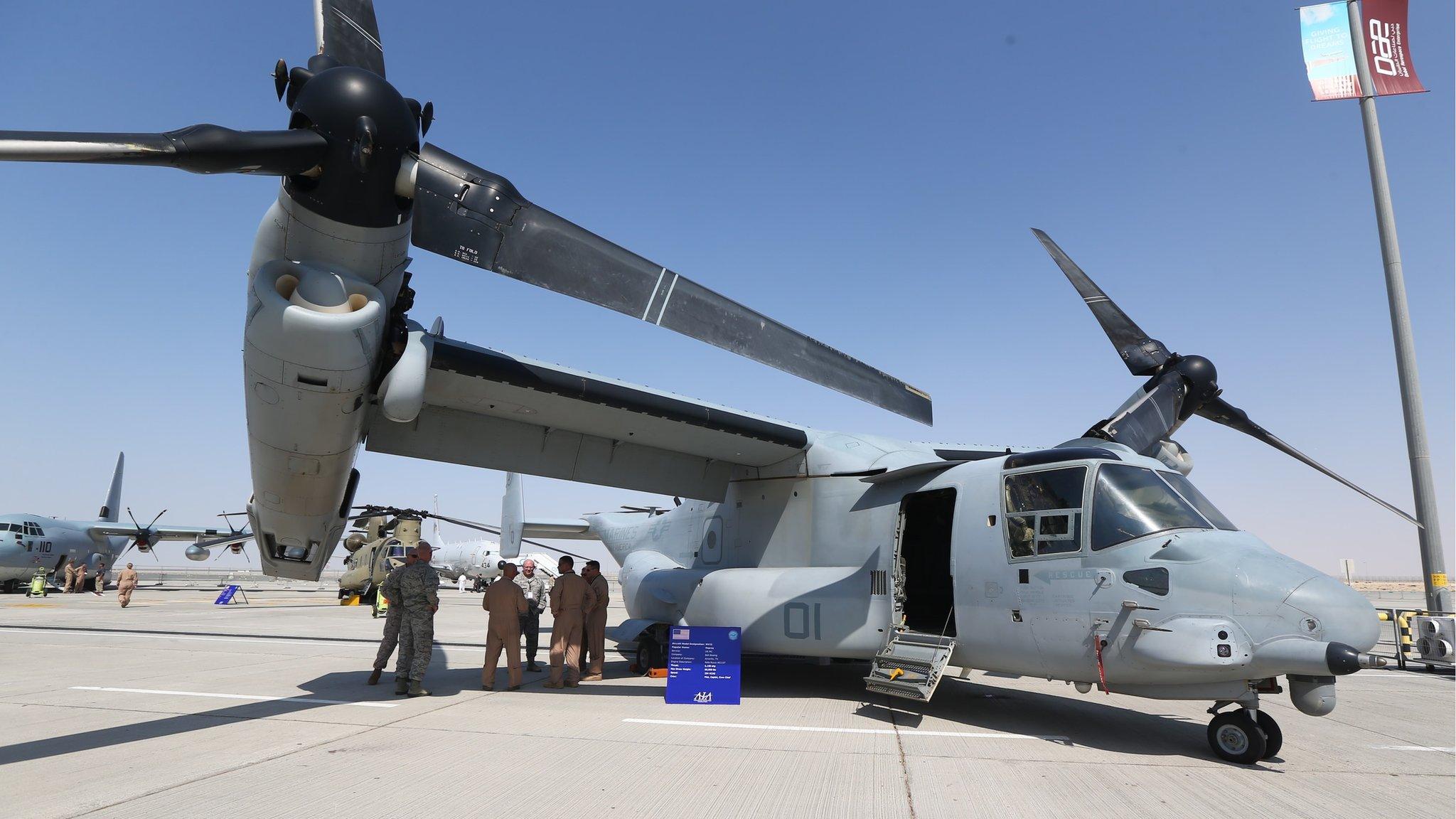
- Published9 November 2015
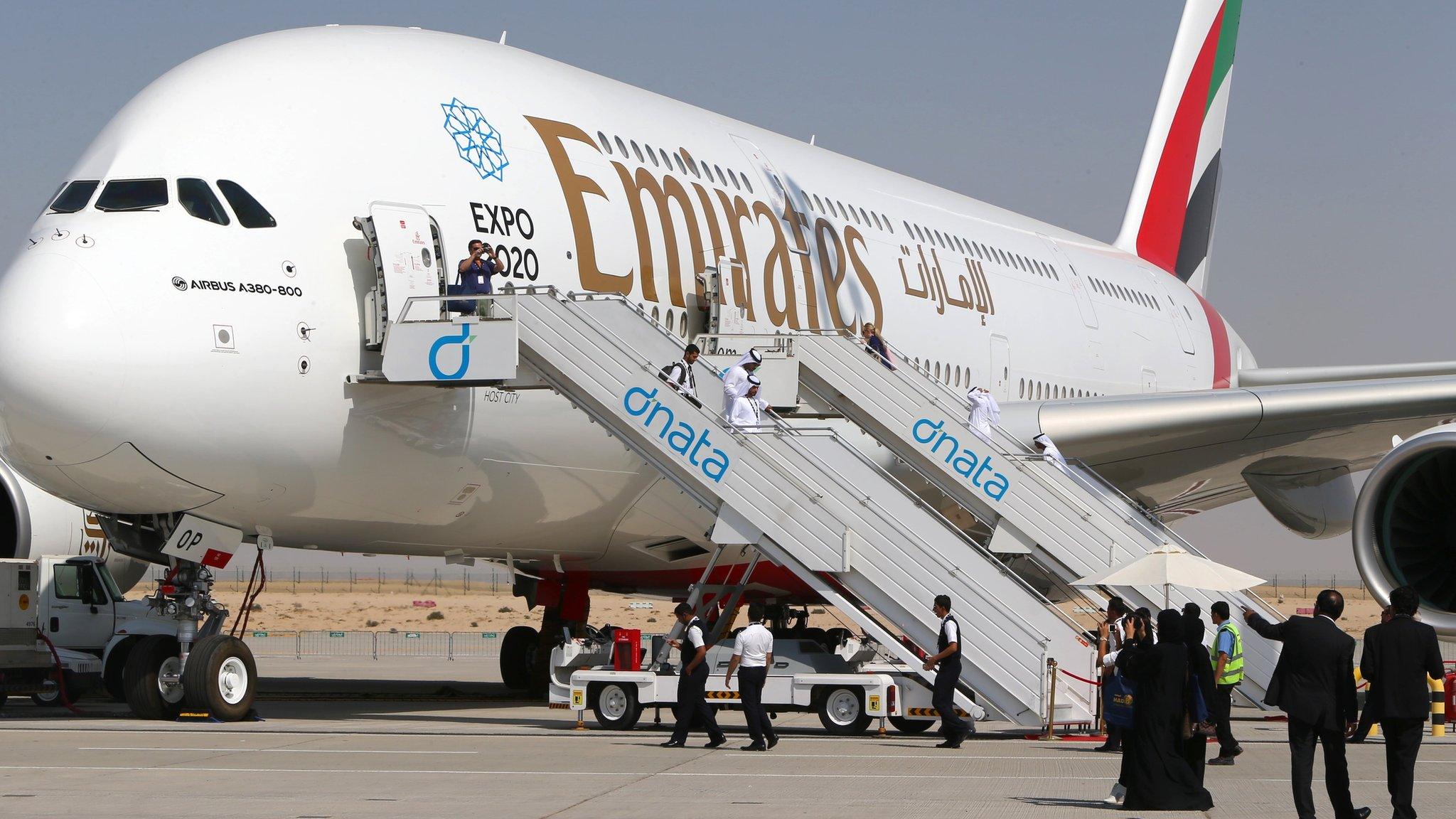
- Published8 November 2015
